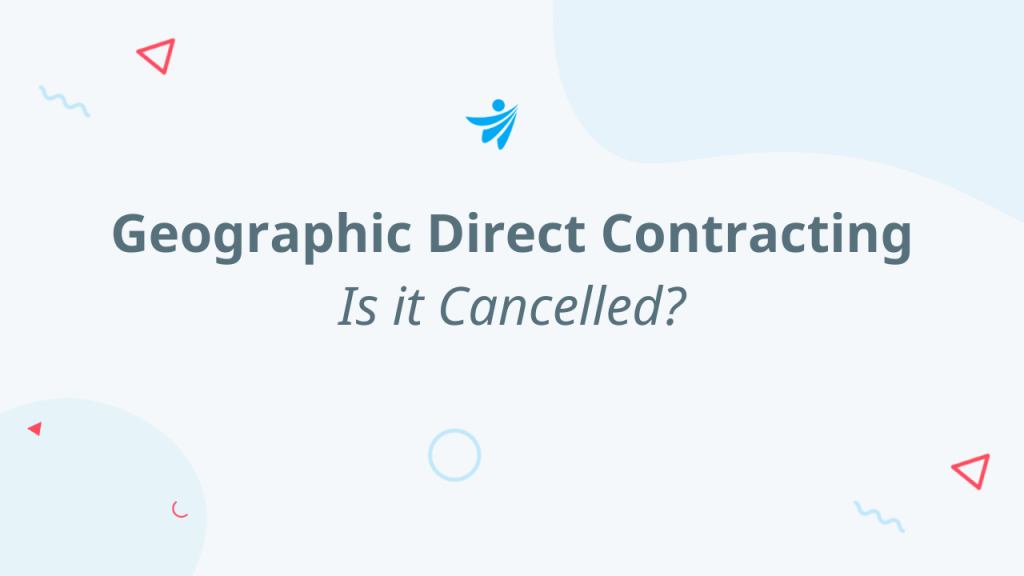
Quality
Oct 25, 2023
Value-Based Care | March 15, 2021

We thought that moving forward with Geographic Direct Contracting was a tall order for CMS in the near term, so it’s not surprising that the new administration has decided to review and adjust the program. Still, it’s our opinion that the concept of geography-based risk is here to stay. We will likely see adjustments to this program in the coming year after CMS completes its period of review. At Clarify, we are seeing advanced organizations already approaching their markets more strategically to prepare for acceleration in value-based payment models, including geography-based risk.
CMS has a clear and frequently stated goal: Reduce the cost of care for Medicare beneficiaries, while improving outcomes and quality of care. Aside from the mission of value-based care, CMS must also contend with the reality that that Medicare is running out of money, and the adoption curve of alternative payment models can’t accelerate fast enough. Geographic Direct Contracting is if nothing else a way for CMS to accelerate the conversation of FFS lives to risk-based arrangements, for better management of the total cost of care.
With this in mind, this post will give our strategic take on the program and of course will summarize why market insights are more important than ever, especially concerning the Medicare FFS market.
A couple of quick highlights in case helpful: Previously intended to launch in 10 markets in January 2022, Geographic Direct Contracting allows a Geographic Contracting Entity (GDCE) to capture a large portion of Medicare FFS lives into risk in one swoop, as well as any patients they can voluntarily align. Additionally, GDCEs could partner with ACOs to help manage their population, creating a crossover between this program and other Medicare Shared Savings Programs. As for the details of the program so, CMS posted a thorough description of what has been contemplated in the program so far on their site.
1. Targeted mainly towards payers and risk-bearing conveners: Geographic Direct Contracting appears targeted towards entities with significant risk-bearing experience. The minimum size and capitalization requirements make this apparent: With a minimum scale of 30,000 beneficiaries and a 10% financial guarantee: 30,000 x ~$11,000 benchmark x 10% = ~$33 million minimum in total guaranteed capital required.
2. CMS will continue to aggressively pursue value: CMS continues to push for ways to increase the percent of Medicare beneficiaries and payments in an APM. The idea of a geographic-based risk arrangement has always felt like a way for CMS to quickly advance this marker. Assuming that they go through with the program, it builds on the momentum towards more mandatory region-based risk and bundles.
3. Adjustments needed: From the start, some details of the program gave us pause, such as the likely complexity of administering a program where between GDCEs and ACOs would potentially split shared savings. While we don’t have the inside take on exactly what details might have caused CMS to put the program under review, we suspect that the likely complexity was a main driver. Adjustments that we would expect to see in the program would be to patient assignment, quality measurement, and shared savings division between ACOs and GDCEs.
1. Payers and risk-bearing entities can benefit – Geographic DC opens the door for payers to capture more lives in a given geography, without the beneficiary acquisition-costs that come with MA. Consequently, payers will have more motivation to incent and interact with providers across a larger portion of their patient panels. As an added bonus to payers, the resulting data they will receive will provide broader visibility into provider performance and market dynamics.
2. Financial sustainability for providers – Provider Sponsored Health Plans and increased levels of MSSP risk are already a key means for delivery organizations to maintain financial sustainability. As many health systems nationwide continue to forecast net losses on their original Medicare populations without participation in these payment models, one key bottleneck is scale of lives under risk. Geographic Direct Contracting can give healthcare delivery systems immediate access to this scale. However, understanding the risk of this population will become that much more critical.
3. Consolidation pressures continue to mount – Two realities converge here:
1. Providers under strain: The operational and economic burdens created by COVID have strained the entire healthcare delivery ecosystem, particularly independent practices and medical groups. Groups supported and capitalized by larger parent organizations had more continuity in their operations in 2020 and will benefit (hopefully) from the resources of larger parent organizations in 2021.
2. Health Systems need alignment: The concept of geographic risk gives payers and large health plans that much more of a mandate to meaningfully engage and incentivize providers and patients towards integrated delivery and utilization of healthcare. Large healthcare organizations need this strong and meaningful alignment, especially from affiliated and independent clinicians.
4. Voluntary Alignment will matter – The voluntary alignment rules in both Geographic and Direct Contracting Global/Professional make us think twice about the future of voluntary alignment as a key success lever for ACOs. To the extent that providers in the selected geographies cannot voluntarily align their patients, a GDCE may capture them in their risk pool instead. Commercial organizations like Clover Health are anchoring a significant part of their strategy on Direct Contracting, and have stated their intent to optimize voluntary alignment as a means to capturing risk lives.
Based on the above, it should be obvious that regardless of where your organization sits in the healthcare ecosystem, Geographic Direct Contracting will affect your market and your beneficiaries.
Although Geographic Direct Contracting is on hold for the time being, we at Clarify see leading organizations already thinking about their markets in ways that seed success in geography-based risk. These organizations are getting an edge by better understanding their overall service areas, surrounding populations, and their performances relative to peers.
We’ve built specific applications on our platform to help healthcare organizations considering or in CMS programs like Geographic Direct Contracting to gain an edge.
Want to know more? Contact Us.